#levana and our ladies of sorrow
Text
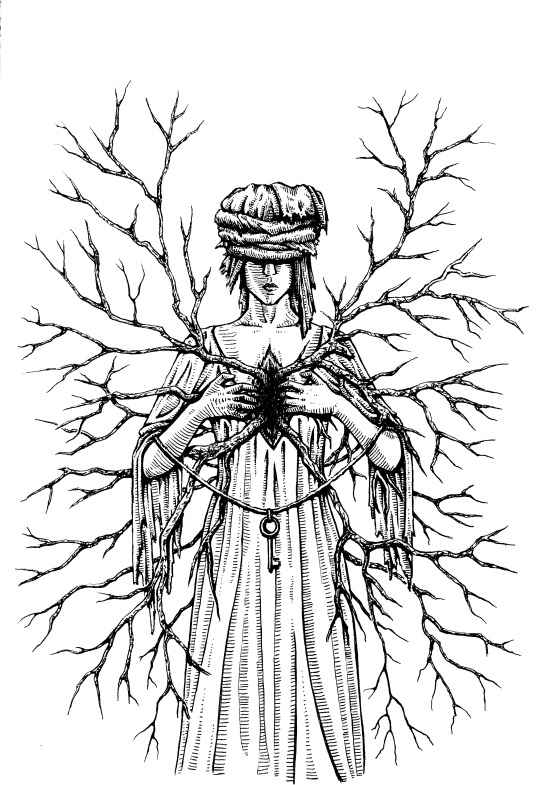
Mater Suspiriorum
In his book Suspiria De Profundis, Thomas De Quincey talks about the three Ladies of Sorrow. The second one is Mater Suspiriorum, Our Lady Of Sighs.
«The second sister is called Mater Suspiriorum , Our Lady of Sighs. She never scales the clouds, nor walks abroad upon the winds. She wears no diadem. And her eyes, if they were ever seen, would be neither sweet nor subtle; no man could read their story; they would be found filled with perishing dreams, and with wrecks of forgotten delirium. But she raises not her eyes; her head, on which sits a dilapidated turban, droops forever, forever fastens on the dust. She weeps not. She groans not. But she sighs inaudibly at intervals. (...) She also carries a key; but she needs it little.»
#mater suspiriorum#suspiria#our lady of sighs#suspiria de profundis#our ladies of sorrow#the three mothers#thomas de quincey#levana and our ladies of sorrow#suspiriorum#dark art#dark surrealism#dark fantasy#my art#art i made for my thesis#for the (not so) imaginary brand ignis domina#inspired heavily by the movie Suspiria (2018)#and the inside of human lungs
168 notes
·
View notes
Text
SUSPIRIA (1977)
✍️De Quincey’s essay ‘Levana and Our Ladies of Sorrow’ provided Dario Argento with the spark of an idea, which was further ignited by tales from his wife, who told him of her grandmother’s stay at a music school which was run by a coven of witches.


Furthermore, within these three films are several references to esoteric traditions, such as Hermeticism, Gnosticism, alchemy, and astrology, as well as esoteric figures such as Fulcanelli and Rudolf Steiner. (Hallam 2017.)🔺
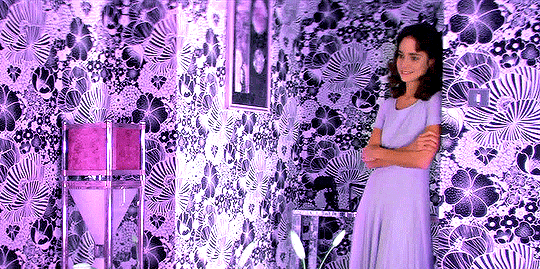

🍻Places and buildings have connection to the history of the Nazi’s.🙋♂️
But Argento was also enthusiastic about the knowledge that "Three Mothers" appear in early Jewish mysticism. Look more for example Yetzirah (below). ✡️
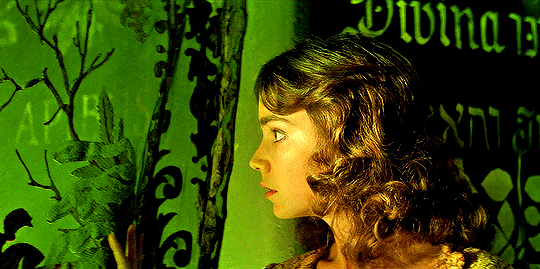

”The second sister is called Mater Suspiriorum - -She never scales the clouds, nor walks abroad upon the winds. She wears no diadem. And her eyes, if they were ever seen, would be neither sweet nor subtle; no man could read their story; they would be found filled with perishing dreams, and with wrecks of forgotten delirium. - - She groans not. But she sighs inaudibly. - - Murmur she may, but it is in her sleep. Whisper she may, but it is to herself in the twilight. (DE QUINCEY 1845)”

The witch functions as stand-in for the subversive potential of female sexuality and solidarity. She constitutes a threat to the entire hierarchical structure of gender subjectivity, and thus she must be mutilated and destroyed. (Reich 2001)🤔

I have referred many times in my podcast to the psychoanalytical theory of Andre Green, about the (rejective/depressive) Dead Mother. This is an perfect example where the mother is destroyed & also her memory is destroyed. Like in Snow White, the bad and intrusive mother must be destroyed to gain power - at least in the fantasy - over the emotions, that you have been left outside.
🎞#Suspiria was shot using Technicolor like also Oz & Disney’s Snow White. Scenes from the latter are replicated in the movie.
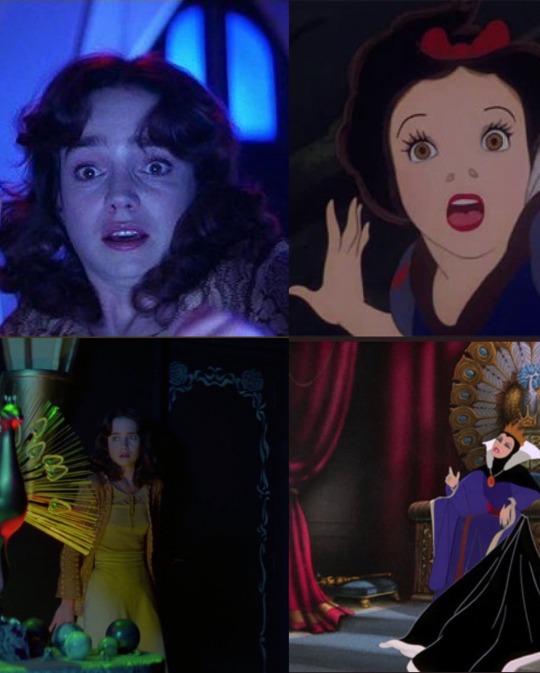
youtube
#dario argento#movies#suspiria#snow white#Andre Green#dead mother theory#psychoanalysis#rudolf steiner#witch#cinema#witchcraft#witches#horror film#SoundCloud#Youtube#horror#film
8 notes
·
View notes
Text

Thomas de Quincey: Levana and our Ladies of Sorrows.
0 notes
Text
'Tenebrous Trinity,' a Supernatural Horror Short Story
‘Tenebrous Trinity,’ a Supernatural Horror Short Story
[This short story is inspired by The Three Mothers trilogy of horror films by Dario Argento, Inferno in particular.]
I
Mary kept reading the book with fascination. She had already read three pages, and she couldn’t take her eyes away from the text.
She had come to this passage: “Thomas De Quincey surely had insight when he wrote of Levana and Our Ladies of Sorrow, though he wasn’t entirely…
View On WordPress
0 notes
Text
"The eldest of the three is named Mater Lachrymarum, Our Lady of Tears. She it is that night and day raves and moans, calling for vanished faces. She stood in Rama, where a voice was heard of lamentation, Rachel weeping for her children, and refused to be comforted. She it was that stood in Bethlehem on the night when Herod's sword swept its nurseries of Innocents, and the little feet were stiffened forever, which, heard at times as they tottered along floors overhead, woke pulses of love in household hearts that were not unmarked in heaven.
...The second sister is called Mater Suspiriorum, Our Lady of Sighs. She never scales the clouds, nor walks abroad upon the winds. She wears no diadem. And her eyes, if they were ever seen, would be neither sweet nor subtle; no man could read their story; they would be found filled with perishing dreams, and with wrecks of forgotten delirium. But she raises not her eyes; her head, on which sits a dilapidated turban, droops forever, forever fastens on the dust. She weeps not. She groans not. But she sighs inaudibly at intervals. Her sister Madonna is oftentimes stormy and frantic, raging in the highest against heaven, and demanding back her darlings. But Our Lady of Sighs never clamors, never defies, dreams not of rebellious aspirations. She is humble to abjectness. Hers is the meekness that belongs to the hopeless.
...But the third sister, who is also the youngest! Hush! whisper whilst we talk of her! Her kingdom is not large, or else no flesh should live; but within that kingdom all power is hers. Her head, turreted like that of Cybèle, rises almost beyond the reach of sight. She droops not; and her eyes rising so high might be hidden by distance. But, being what they are, they cannot be hidden; through the treble veil of crape which she wears, the fierce light of a blazing misery, that rests not for matins or for vespers, for noon of day or noon of night, for ebbing or for flowing tide, may be read from the very ground. She is the Defier of God. She also is the Mother of Lunacies, and the Suggestress of Suicides. Deep lie the roots of her power; but narrow is the nation that she rules. For she can approach only those in whom a profound nature has been upheaved by central convulsions; in whom the heart trembles and the brain rocks under conspiracies of tempest from without and tempest from within. Madonna moves with uncertain steps, fast or slow, but still with tragic grace. Our Lady of Sighs creeps timidly and stealthily. But. this youngest sister moves with incalculable motions, bounding, and with a tiger's leaps. She carries no key; for, though coming rarely amongst men, she storms all doors at which she is permitted to enter at all. And her name is Mater Tenebrarum, −Our Lady of Darkness."
-Thomas De Quincey, from
Levana and Our Ladies of Sorrow, 1821.
#no seriously I love this essay because it fits Her so well#beautiful beautiful poetry#Our Lady of Sorrows#Our Ladies of Sorrow#blood and water#my notes#Dolorosa
16 notes
·
View notes
Photo
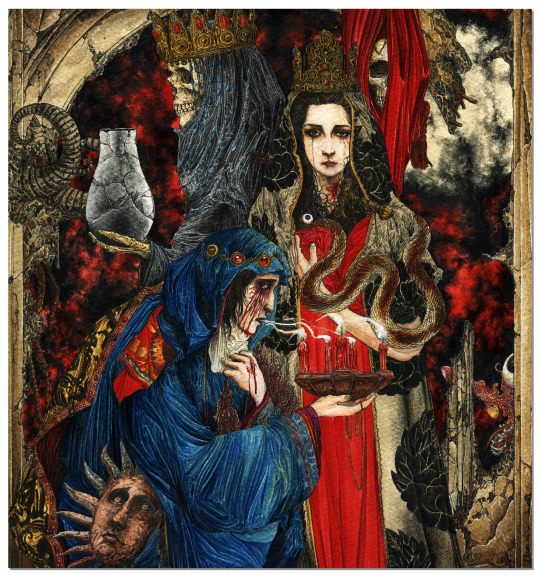
Suspiria de profundis: Levana and our ladies of sorrows
24x27
Watercolor and pencil drawing over paper
02/2019
#suspiria#levana#sorrow#death#whisper#candles#crowns#snake#moon#sun#symbolique#symbolism#Symbolist#dark#dark surrealism#Dark Aesthetic#artist#art#artists on tumblr#watercolor#pencildrawing
217 notes
·
View notes
Text
I have a bunch of new theories for Jujutsu Kaisen.
One about color theory and Synesthesia.
My newest one is based in the idea that Gege Akutami got inspiration from “The Three Mothers” film trilogy of Dario Argento while also doing reference to the poem from these films take inspiration: “Levana and Our Ladies of Sorrow” by Thomas De Quincey and also fits with the constant symbolism of pregnancy in the series.
That Yuji with the current Sukuna and the original form of Sukuna are the mothers in certain way: Mater Lachrymarum (Our Lady of Tears), Mater Suspiriorum (Our Lady of Sighs), and Mater Tenebrarum (Our Lady of Darkness).
Still not sure which role is each character, especially because the Argento films and the De Quincey poem have different traits to each mother, but my big guess that Akutami is taking the De Quincey’s poem, so Yuji is Tenebrarum, actual Sukuna is Suspiriorum and the original Sukuna is Lachrymarum.
2 notes
·
View notes
Photo

Levana and Our Ladies of Sorrow, Ben Shahn, 1931, Brooklyn Museum: American Art
Size: 8 1/2 x 6 1/4 in. (21.6 x 15.9 cm)
Medium: Bound text
https://www.brooklynmuseum.org/opencollection/objects/188339
2 notes
·
View notes
Text

Mater Lachrymarum
In his book Suspiria De Profundis, Thomas De Quincey talks about the three Ladies of Sorrow. The first one is Mater Lachrymarum, Our Lady Of Tears.
«Her eyes are sweet and subtle, wild and sleepy, by turns; oftentimes rising to the clouds, oftentimes challenging the heavens. She wears a diadem round her head. (...) This sister, the elder, it is that carries keys more than papal at her girdle, which open every cottage and every palace. (...) By the power of her keys it is that Our Lady of Tears glides a ghostly intruder into the chambers of sleepless men, sleepless women, sleepless children, from Ganges to the Nile, from Nile to Mississippi.»
#mater lachrymarum#our lady of tears#suspiria#suspiria de profundis#our ladies of sorrow#levana and our ladies of sorrow#the three mothers#thomas de quincey#lachrymarum#dark art#dark surrealism#my art#traditional art#art i made for my thesis#for the (not so) imaginary brand ignis domina
63 notes
·
View notes
Text

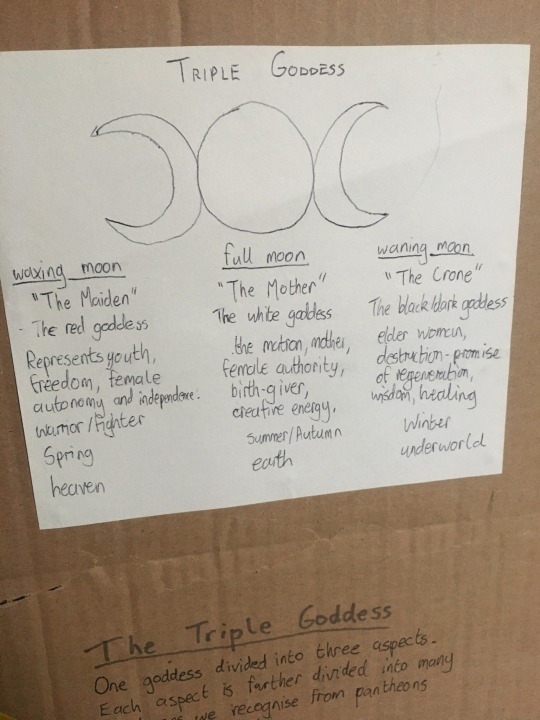


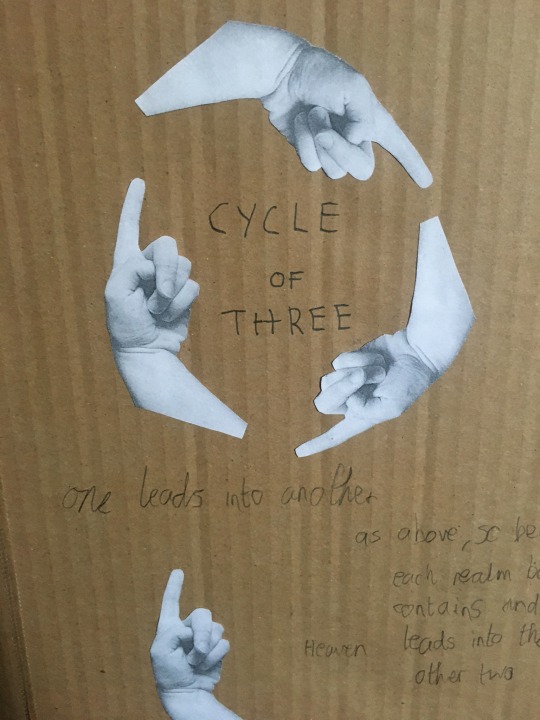

A collection of images from my codex. I based it on an essay by writer Thomas de Quincey called ‘Levana and our Ladies of Sorrow’. Most of the codex is made up of my investigations into the concept of the three mothers which is explained by De Quincey in the essay. I also looked at the significance of the number three in mythology and the idea of the triple goddess which is a central tenet of modern Wicca.
4 notes
·
View notes
Photo
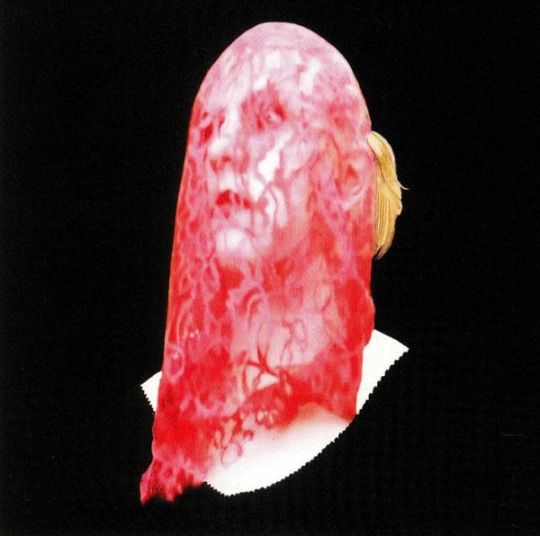
Thomas De Quincey Read by Laurence R. Harvey - Suspiria De Profundis: Levana and Our Ladies of Sorrow
Cadabra Records
2019
#Thomas De Quincey#Laurence R. Harvey#Suspiria de Profundis#Cadabra Records#2019#album art#spoken word
14 notes
·
View notes
Note
Can you explain Suspiria to me though, I watched when the remake was announced and idk if it was just me but I just did not get it haha
part of me is like “what is there to explain” because it’s just, that kind of movie. narrative coherence is not really the POINT (something the remake might alter which brings up -- like that gives it a completely different tone but i won’t get into that)
did you want like?? the plot explained, or specific things, or... ?
the interesting thing about suspiria is that it’s actually backed by like, a crazy amount of legitimate lore that argento... sort of “came up with”, but sort of drew from an essay segment called levana and our ladies of sorrow which is part of a bigger essay by thomas de quincey. in it he talks about three women who are essentially like, the embodiment of human suffering (mood). so argento translated this idea into three evil, all-powerful witches, and the one you see in suspiria (helena markos) is one of those three.
i think it’s explained at some point (in either one of the sequels or just by argento himself) that she’s like, losing her power or dying, and that’s why she’s kind of hideous in the movie (the other two in the sequels both appear young and beautiful) and why she just kind of floats around at night and sleeps a lot. but basically she’s like, so ~evil and unholy~ that her very presence is toxic, which is why weird stuff starts to happen in the school like the maggot infestation.
so the other teachers at the school are witches who serve under her in her coven, and they’re trying to keep her alive because, as the one professor guy says, if you kill the head of the coven then the entire coven burns. he also says that these particular witches thrive on and draw power from human suffering, so that’s also why they’re kinda going around killing students at the school, in order to sustain her.
I HOPE THAT EXPLAINED SOMETHING FOR YOU
#suspiria#ill tag in case more people are getting into this movie with the remake coming out#Anonymous
9 notes
·
View notes
Video
MATER LACHRYMARUM, MATER SUSPIRIORUM, MATER TENEBRARUM is a meditation on the artist's assumption of a cosmic disappointment in humanity as embodied through the archetypal feminine trio: the fates, the witches Macbeth, and especially, the Three Mothers of Sorrow originating in Thomas de Quincey's essay, "Levana and Our Ladies of Sorrow," and channeled aesthetically through the lurid and kaleioscopic influence of Dario Argento's adaptation of de Quincey's feminine grotesque in his Three Mothers trilogy. "Do they talk, then? O, no! mighty phantoms like these disdain the infirmities of language. They may utter voices through the organs of man when they dwell in human hearts, but amongst themselves there is no voice nor sound; eternal silence reigns in their kingdoms. They spoke not...they whispered not; they sang not; though oftentimes methought they might have sung, for I upon earth had heard their mysteries oftentimes deciphered by harp and timbrel, by dulcimer and organ. Like God, whose servants they are, they utter their pleasure, not by sounds that perish, or by words that go astray, but by signs in heaven, by changes on earth, by pulses in secret rivers, heraldries painted on darkness, and hieroglyphics written on the tablets of the brain. They wheeled in mazes; I spelled the steps. They telegraphed from afar; I read the signals. They conspired together; and on the mirrors of darkness my eye traced the plots. Theirs were the symbols; mine are the words."- Thomas de Quincey, "Levana and Our Ladies of Sorrow"
#meg powers#my work#thomas de quincey#mater lachrymarum#mother of tears#mother of sighs#mother of darkness#mothers of sorrow#the three mothers#dario argento#hecate#witches#cosmic#gothic#mater suspiriorum#mater tenebrarum#tenebrae#suspiria#inferno#giallo#lesbian art#lesbian artist#installation#installation art#providence art#the dirt palace#sculpture
141 notes
·
View notes
Text
"...these are the Sorrows; and they are three in number, as the Graces are three, who dress man's life with beauty: the Parcae are three, who weave the dark arras of man's life in their mysterious loom always with colors sad in part, sometimes angry with tragic crimson and black; the Furies are three, who visit with retributions called from the other side of the grave offences that walk upon this; and at once even the Muses were but three, who fit the harp, the trumpet, or the. lute, to the great burdens of man's impassioned creations. These are the Sorrows, all three of whom I know."
-Thomas De Quincey, from Levana and Our Ladies of Sorrow, 1821.
3 notes
·
View notes
Text
(...) these are the sorrows; and they are three in number, as the graces are three (...) the parcae are three; (...) the furies are three; (...) even the muses were but three (...)
(...) by signs in heaven, by changes on earth, by pulses in secret rivers (...)
her eyes are sweet and subtle, wild and sleepy, by turns; oftentimes rising to the clouds, oftentimes challenging the heavens.
hush! whisper while we talk of her!
- levana and our ladies of sorrow, suspiria de profundis, thomas de quincey
#english#from suspiria this was one of my favourite essays#this one and the affliction of childhood#though all are lovely#i havent read the confession of an english opium eater yet but if its as good as suspiria and his other works i guess i will have to read it#prose
1 note
·
View note